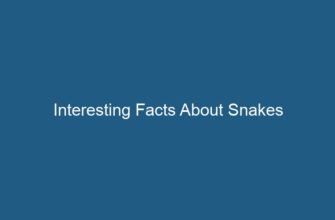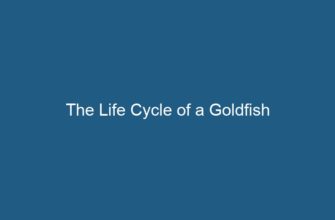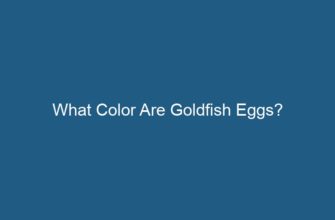Penguins are fascinating creatures known for their unique behaviors and strong family bonds. These charismatic birds go to great lengths to ensure the survival and well-being of their offspring. In this article, we will explore the various ways in which penguins care for their young, from incubation to fledging.
- 1. Introduction to Penguins
- 1.1 Physical Characteristics of Penguins
- 1.2 Penguin Species
- 2. Breeding Season
- 2.1 Courtship Rituals
- 2.2 Nest Building
- Penguin Parent Patrol | National Geographic
- Baby Emperor Penguins Emerge from Their Shells | Nature on PBS
- 3. Egg Incubation
- 3.1 Incubation Shifts
- 3.2 Egg Warmth and Protection
- 4. Chick Rearing
- 4.1 Feeding Chicks
- 4.2 Guarding and Protecting Chicks
- 5. Fledging
- 5.1 Learning to Swim
- 5.2 Gradual Independence
- 6. Frequently Asked Questions (FAQs)
- FAQ 1: Do penguins lay eggs?
- FAQ 2: How long do penguins incubate their eggs?
- FAQ 3: How do penguins find their chicks in a crowded colony?
- FAQ 4: Do both male and female penguins take care of the chicks?
- FAQ 5: How do penguins communicate with their chicks?
- FAQ 6: What are some threats to penguin offspring?
- 7. Conclusion
1. Introduction to Penguins
Penguins are flightless birds that inhabit the Southern Hemisphere, primarily in Antarctica. They belong to the family Spheniscidae and are highly adapted to life in the water. Penguins have evolved specialized physical characteristics and behaviors to thrive in their harsh environments.
1.1 Physical Characteristics of Penguins
Penguins have a streamlined body shape, which helps them navigate through water with ease. Their wings have evolved into flippers, perfect for propulsion underwater. They have a thick layer of blubber that serves as insulation against the cold temperatures. Penguins also have a unique gland near their eyes that filters out excess salt, allowing them to drink seawater.
1.2 Penguin Species
There are several species of penguins, each with its own unique characteristics and habitats. Some of the most well-known species include the Emperor Penguin, Adélie Penguin, Gentoo Penguin, and King Penguin.
2. Breeding Season
Penguins have a well-defined breeding season, which varies depending on the species and location. During this time, they engage in courtship rituals and build nests to lay their eggs.
2.1 Courtship Rituals
Penguins engage in elaborate courtship rituals to attract a mate. These rituals involve displays of vocalizations, head-bobbing, and gift-giving. Male penguins go to great lengths to impress females, often presenting them with pebbles as a symbol of affection.
2.2 Nest Building
Penguins build nests using stones, grass, and other materials found in their environment. The male and female take turns collecting these materials and arranging them into a circular nest. The nest provides protection and insulation for the eggs and chicks.
Penguin Parent Patrol | National Geographic
Baby Emperor Penguins Emerge from Their Shells | Nature on PBS
3. Egg Incubation
Once the eggs are laid, penguins begin the incubation process to ensure the embryos develop and hatch successfully.
3.1 Incubation Shifts
Penguins exhibit a unique behavior known as incubation shifts. Both the male and female take turns incubating the eggs, sharing the responsibility equally. This allows each parent to forage for food without leaving the eggs unattended for too long.
3.2 Egg Warmth and Protection
During incubation, penguins use their brood pouches to keep the eggs warm and protected. The brood pouch is a featherless patch of skin on the lower belly that provides direct contact with the eggs. Penguins also use their feet to cover the eggs and shield them from the cold.
4. Chick Rearing
Once the eggs hatch, penguins continue to provide care and protection for their chicks until they are ready to fledge.
4.1 Feeding Chicks
Penguins regurgitate food to feed their chicks. Both parents take turns bringing food from the sea to the nest, ensuring a constant supply of nutrition for the growing chicks. The diet of penguin chicks primarily consists of fish and krill.
4.2 Guarding and Protecting Chicks
Penguins are highly vigilant when it comes to protecting their chicks from predators and harsh weather conditions. They form crèches, which are groups of chicks huddled together for warmth and protection. Penguins take turns standing guard while others forage for food.
5. Fledging
As the chicks grow, they reach a stage known as fledging, where they begin to explore their surroundings and prepare for independence.
5.1 Learning to Swim
Before they can become independent, penguin chicks must learn to swim. They do so by following their parents into the water and gradually building their swimming skills. The parents continue to provide guidance and protection during this crucial phase.
5.2 Gradual Independence
Once the chicks have mastered swimming and hunting techniques, they become more independent. They start to explore their surroundings, interact with other chicks, and gradually venture further away from the safety of the colony.
6. Frequently Asked Questions (FAQs)
FAQ 1: Do penguins lay eggs?
Yes, penguins lay eggs. They are one of the few bird species that lay eggs and do not build traditional nests.
FAQ 2: How long do penguins incubate their eggs?
The incubation period varies depending on the species, but it typically ranges from 30 to 60 days.
FAQ 3: How do penguins find their chicks in a crowded colony?
Penguins can recognize their chicks by vocalizations and unique markings. They use these cues to locate and identify their offspring in a crowded colony.
FAQ 4: Do both male and female penguins take care of the chicks?
Yes, both male and female penguins take an active role in caring for their chicks. They share responsibilities such as incubation, feeding, and protection.
FAQ 5: How do penguins communicate with their chicks?
Penguins communicate with their chicks through vocalizations and physical contact. They use different calls to convey specific messages, such as signaling danger or calling their chicks to gather.
FAQ 6: What are some threats to penguin offspring?
Penguin offspring face threats such as predation from sea lions and leopard seals, extreme weather conditions, and food scarcity. Climate change and human activities also pose significant risks to penguin populations.
7. Conclusion
Penguins are remarkable creatures with a strong commitment to their offspring. From courtship rituals to fledging, these birds demonstrate remarkable parenting skills and unwavering dedication. By understanding how penguins care for their young, we can gain a deeper appreciation for their unique behaviors and the challenges they face in their natural habitats.










